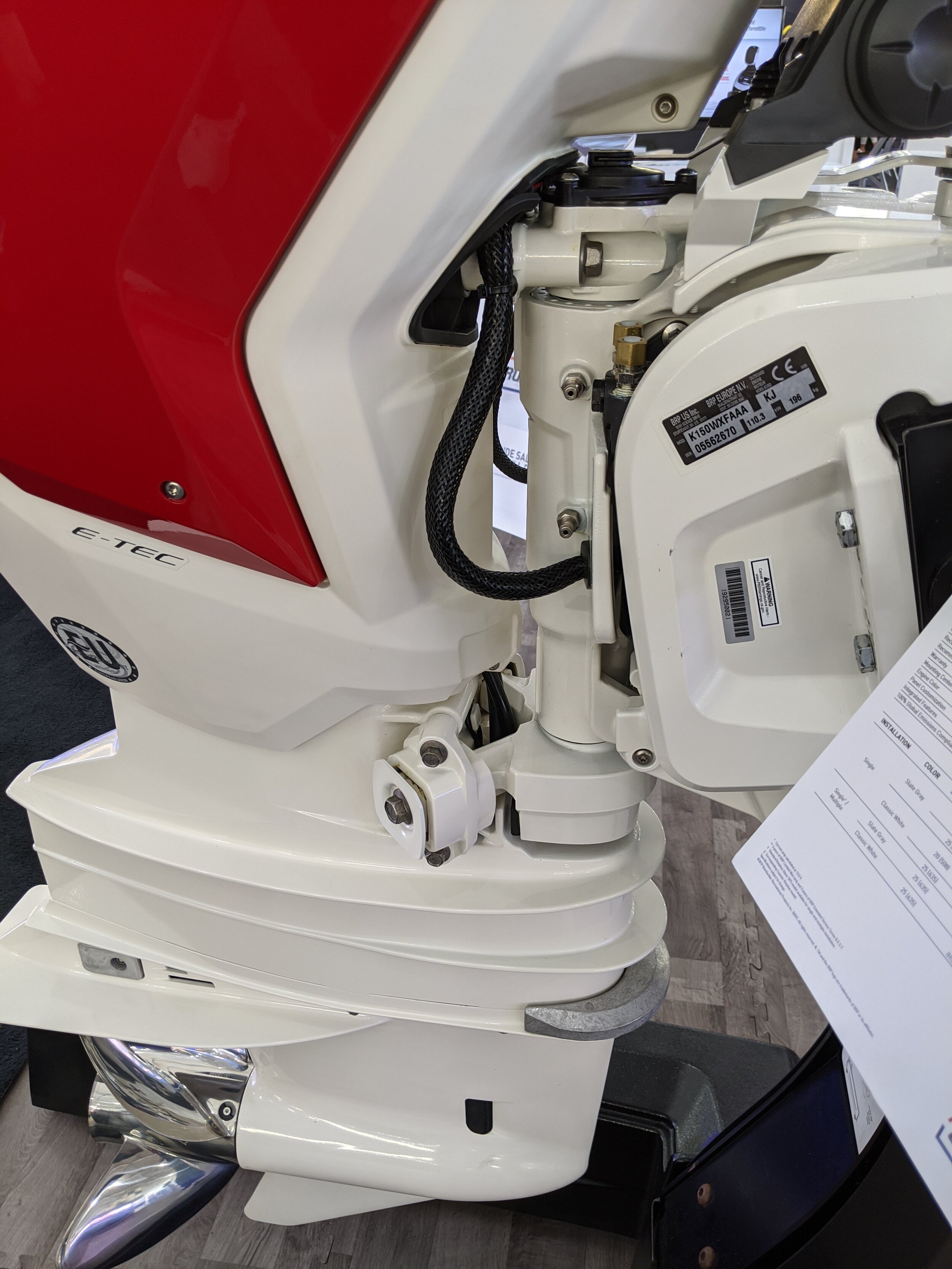Electric Steering: The New Movement in Marine Innovation
When it comes to incremental change in the marine industry, one of the most curious is steering. When it comes to steering for outboards, not much has changed in the last 20+ years. Certainly the hydraulic systems have improved, but overall they use the same technology they always have. In automotive there has been a shift to completely electric steering, fly by wire so to speak, where the on demand sensors send positioning signals to actuators. The downfall for sports car enthusiasts is you do lose the “feel” that traditional steering provides, but from a mechanical, safety and cost perspective, the electric steering is the way to go. In boats, this is becoming a reality. Let’s look at Dometic’s Optimus Electric Power Steering (EPS) and new actuator.
One innovation that is popular with some boats is the electric assist hydraulic steering, where an electric motor and sensors assist in moving the hydraulic cylinder. But, Dometic (formerly SeaStar) takes it further with a complete fly by wire steering system. This means there is no hydraulic fluid, no pump, no hydraulic lines; just plug and play. My first concern would be that there would be lag in the input but that is not the case. The sensors work on demand, have no parasitic affect on the boat’s power and there is no lag. And, because this is controlled sensors you can have all sorts of adjustments. Additionally, rigging multiple engines is a breeze with one wire harness connecting the actuator.
Simple connections make it work. Additional units connect to the helm. Installation is a fraction of the time and the system is very light. (photo credit Dometic)
If we go inside the actuator we would find the “brains” of the system, where the ECM, CANbus communication and position circuit. More importantly, providing the movement is a unique and proprietary roller screw drive system. The roller screw is an engineering marvel, with 7 rollers screws housing a main center screw, creating ultra precise and durable movement.
Beautiful hardware inside the actuator housing. This stainless steel roller screw is the critical piece. (photo credit: Dometic)
This roller screw system is obviously critical to the functionality but it poses a massive safety advantage over traditional hydraulic or cable steering. If you lose hydraulic pressure for whatever reason you lose your steering and that could happen at the most inopportune time. The Achilles heel of any hydraulic or mechanical steering in a boat is when it fails, you lose all control. With the Optimus actuator, if power is lost you can still maintain control of your boat. In the case of a complete power loss, you can gain access to the mechanism and move the steering manually if you have to. But critically, if you were going fast, you would not experience a sudden turn like you would in other systems.
Optimus EPS uses an electric helm that instantly sends a signal to the actuator. I was shocked at how instant and precise it was. A Dometic representative said when they tested on a high performance bass boat, they found better control than the hydraulic steering because it was so precise. Additionally, they can “adjust” the sensitivity electronically.
Compact and simple, the smooth operation Optimus Actuator works with the Optimus joystick and autopilot. Easy install on up to quad engines as well.
When it comes to the actually movement, it is very smooth. When steering, there is no softness that hydraulic exhibits, the roller screw is precise, the only possibility for any play is the microsecond it takes for the sensor to send a signal to the actuator. The drawback being there is virtually no “feel”, however I was trying a display model, not actually in a running boat. Anyone who has driven a high performance boat knows how critical feel and small inputs are at high speed. But, the electric actuator won’t have the feedback a mechanical steering has or even a hydraulic. It’s like petting a dead cat while blindfolded, you really can’t feel anything on the display model.
That said, I would love to test it on a performance boat because I think it would be better than a hydraulic system. Reports are good so far, improved high speed control over hydraulic. The safety, smoothness and clean rigging make it a game changer. Integrated steering in outboards is the future, but this is real progress for now and the repower market.
On top of all the technical advantages is the system is virtually maintenance free, you simply grease the ram through a fitting periodically. And, you can install this very easily as it uses CANbus harnesses that simply plug in. EPS 360 Joystick and autopilot are part of the Optimus system. The Optimus steering from Dometic is definitely going in the right direction.
Steering like this hydraulic Tournament unit from SeaStar / Dometic is old school in comparison.
Nothing matches the elegance of having the steering completely integrated within the swivel bracket as seen in this Evinrude G2. This is hydraulic, but you could see them switching to electric easily.











